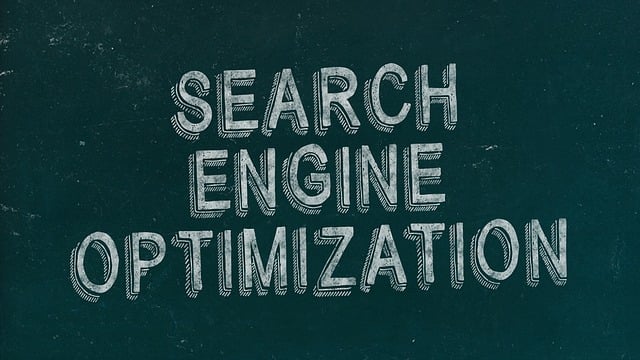E-E-A-T Is Not a Ranking Factor: What You Need to Know about it
Google is E-E-A-T framework summarizes Experience, Expertise, Authoritativeness, and Trustworthiness. This framework led the game in content creation and SEO mostly in conjunction with high-ranking content. A very common confusion: E-E-A-T is not a direct ranking factor. That is a big difference for someone trying to improve visibility in search results.
What follows is how we debunk why E-E-A-T is not a ranking factor, what its actual role in the Google ranking system is, and how we could leverage its potential and improve quality in content and experience by the user.
What Does E-E-A-T?
E-E-A-T is simply an acronym which translates to:
Experience: The content is a firsthand or valuable user experience?
Expertise: Is the author or content creator an expert?
Authoritativeness: Is the source itself credible and trustworthy in its area?
Trustworthiness: Does the user trust the information?
It is E-E-A-T a concept introduced by Google to their Quality Rater Guidelines so as to be able to allow the search quality raters-this is the human evaluator who rates changes to Google’s algorithm-to ensure that high-quality trustworthy content ranks higher for key queries, especially those falling under sensitive fields like health, finance and safety.
Why E-E-A-T Isn’t a Ranking Factor
A “ranking factor” is a particular part of the Google algorithm that affects in direct ways how one page ranks on SERPs. Ranking factors are tangible, quantifiable parts that algorithms use, including keywords, page loading speed, and backlinks.
E-E-A-T isn’t any of the above. Here’s why:
Concept, Not Code: Google would like very much to feature E-E-A-T as a broad principle shaping the quality of the contents. E-E-A-T is not an algorithmic component nor part of the code that Google’s ranking system can “count” as a variable.
Guidance to human raters not for algorithms Google’s human quality raters use E-E-A-T as guidance to aid them in rating their search results and providing feedback to Google on updates in its algorithms. This is not feed put straight back into rankings but rather part of perfecting the algorithm.
Signals Not Ranking Factors: Google speaks in terms of “signals” that align with the principles of E-E-A-T. Google’s algorithm employs over 300 signals-things like page speed, backlinks, and even engagement metrics-by using them that can indicate quality and indirectly support the E-E-A-T qualities, but they’re not measured as E-E-A-T itself.
How Google Applies E-E-A-T for Content Evaluation
Although E-E-A-T is not a ranking factor in itself, it has profoundly shaped the Google approach toward content evaluation. Here’s how:
1. Training and Feedback for the Algorithm
Quality raters assess the search results in order to give Google feedback on the algorithmic change via Quality Rater Guidelines that contain E-E-A-T. This helps Google understand how far and in what extent the algorithm is serving good quality content.
2. Indirect Influence Through Signals
E-E-A-T by itself is not a ranking factor, however Google has designed signals that correlate good quality content with E-E-A-T guidelines. For instance:
Backlinks and Mentions: Good quality backlinks from reputed websites can be taken as a signal of authoritativeness.
- User Engagement: A lower bounce rate with a higher time on page can be a way of signaling trustworthiness and quality.
- Content Structure: Proper content structuring and the use of headings with schema markup point to expertise
- These signals also follow E-E-A-T and indirectly will impact the content in terms of ranking more effectively.
E-E-A-T and Its Impact on the Direction of the SEO Strategy
Since E-E-A-T is not a direct ranking factor, where does it belong in your SEO strategy? To summarize, let content development and user experience improvements know that they may lead to better performance in search. Let’s crack open the ways to best apply the principles of E-E-A-T:
1. Quality content with a focus on users
The ultimate intention of Google is to provide the most relevant and high-quality content to the user. Do the same yourself: give your users real value:
Experience: Use first-hand experience; you share insights or facts based on experience.
Expertise: On your page, use specialists or work with them while creating content. Make a reference to trustworthy sources.
Authoritativeness: Repute is built over quality content, mentions, and backlinks.
Trustworthiness: Transparency, research, and up-to-date content.
Google is aware that, like authors’ identities, and also for health and finance, matters for a lot. Include their biography, qualifications, and connections to authoritative profiles such as LinkedIn, which builds up their credentials and authority.
3. Optimize User Experience and Technical SEO
Technical SEO is a long way to make your website trustworthy because user experience does correlate with it:
Page Speed: The page loading time should be as less as possible so the bounces will be less and user experience improves.
Mobile-Friendliness: Make your website friendly to mobile devices.
Secure Connections: Use HTTPS for secure browsing that fosters trustworthiness
Myths About E-E-A-T As A Ranking Factor
Because E-E-A-T has been so widely publicized in the world of SEO, there’s much common misconception in its regard. Let’s clear out some of those:
1. Myth: If I create content which focuses on E-E-A-T, my content will automatically rank more.
Reality: Sure, E-E-A-T can make the content stronger, but that in no means guarantees it’s going to rank better. SEO still sits atop the randomized amalgamation of myriad factors and signals, including but not limited to, technical optimization, keyword relevance, and backlinks.
2. Myth of my liberal arts college: E-E-A-T is something I can directly optimize.
Reality: Where on-page SEO factors such as titles and meta tags are concerned, E-E-A-T is not something to be “optimized” for. You instead consider it more of a best practice to produce content that is authoritative, useful, and meets Google’s expectations for quality.
3. Myth: “E-E-A-T only applies to certain industries.”
Fact: Although E-E-A-T is specifically emphasized for YMYL content, it is applicable to every content creator. Regarding all the topics, Authority, Expertise, and Trustworthiness should be used.
Actionable Steps to Improve E-E-A-T for SEO
Include E-E-A-T best practices in your SEO strategy, but it’s not a ranking factor. Here are actionable steps:
Quote credible sources and data: Using authoritative sources in quotation will give trustworthiness and help fact-checking.
Author Authority: Listing contributors’ credentials and deep bio links at the bottom of the article.
Quality Backlinks: All quality backlinks from reliable sites add value to your credibility of the site.
Optimize for User Intent: The best content is when that purpose served by such content is in alignment with user intent because it is often close to the E-E-A-T principles.
Update Content: Update the content as YMYL content needs to be relevant to the user.
Conclusion: Good Quality but not Ranking
In a nutshell, E-E-A-T can’t be treated as ranking factor but merely more of a framework to work under while creating good content. With the view of E-E-A-T, you are to build a foundation that adopts Google’s vision and brings satisfaction to users. In this way, ultimately the performance of your website in search improves.
To win at SEO, focus on content that needs to be valuable and trustworthy for users, so E-E-A-T can be a benchmark rather than the target. Google’s algorithms are constantly changing: following the guidelines of E-E-A-T will actually help you drive content that’s relevant and valuable over an evolving SEO landscape.







